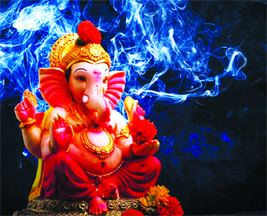

“In the end, it is apparent that the credit for the victory will largely belong in UP’s case to Adityanath. His cheerleaders propagated the view of Yogi’s hard-bitten image as a man who will not tolerate law and order challenges and dissent on the ground — evident in the manner in which he put down the protests against the Citizenship Act amendments — and is incorruptible. It also puts Yogi in the reckoning as a future leader.”
As the BJP rewrote a serial and spectacular comeback for itself in Uttar Pradesh in the assembly elections, it was evident that the party’s electioneering went according to a script that coalesced multiple strategies and responses to the drawbacks its government in Lucknow ran into in the past five years. It was as though the BJP anticipated the electorate’s positive and negative feedback on the Yogi Adityanath government and switched on its feed-forward correction capabilities to the best possible extent. It takes a level-head to assess a party’s internal weaknesses and accept them as real before rectifying. That’s what the Delhi leadership did, sometimes in consultation with Chief Minister Yogi Adityanath and at times unilaterally. Given its experience with the maverick chief minister, the BJP brass recognized that while it was impossible to dump him like its two incumbents in Uttarakhand and Gujarat, it was not feasible to give him the long rope he desired. The mix-and-match formula the BJP adopted was fraught with uncertainty but the gamble paid off.
The Samajwadi Party (SP), in tandem with the Rashtriya Lok Dal (RLD) and other parties, positioned itself as the BJP’s principal challenger and converted the contest into a bipolar joust, hoping that the votes that went to the Bahujan Samaj Party (BSP) and the Congress — the other significant players — would pool into its kitty. The SP’s calculation was that this tactic alone would help enhance its depleted vote share to a level of parity with the BJP and make the contest fairly even. It didn’t happen.
Statistics speak for themselves. The SP, which was the incumbent in 2017, dropped from a high of 224 seats in the 403-member legislature to 47 in the election that year, its vote share plummeting to 21.82 per cent in the 311 seats it contested with the Congress as an ally. UP was awash with the Narendra Modi wave that swamped every party. The BSP picked up just 19 seats with a vote share of 22.23 per cent. The BJP was on top, winning 312 of the 384 seats it fought and posting a vote share of nearly 40 per cent. Its team-mates, the Apna Dal (Soneylal) and Suheldev Bharatiya Samaj Party (SBSP), benefitted immensely from the partnership. The SBSP left the BJP shortly thereafter while the Apna Dal stayed with it. Therefore, the SP had a vast swathe of ground to cover before it hoped to catch up with the BJP.
The SP’s role in the Opposition was not inspiring. For instance, during the horrific pandemic strikes when the Adityanath government seemed apathetic to people’s plight, the SP was nowhere on the ground to help people. Its defense was that the situation was not conducive for its workers to be mobile. The state government tactically unrolled the Centre’s scheme to hand over rations to the less well-off in the villages and stave off hunger, particularly among the migrants returning home. A realistic assessment would have it that the sops would not have recompensed the loss of lives suffered in this phase. But months later, people thought less of the sufferings inflicted by Covid-19 and remembered the “ration-paani” delivered to their doorstep.
The BJP had several problems in the prelude to the elections. Unlike the CMs “anointed” by the “high command”, Adityanath was not one to be subservient to Delhi’s diktat. From Day 1, the custodian of Gorakhpeeth, North India’s wealthiest monastery, fancied himself as a potentate and potentially a PM candidate. Delhi’s efforts to have a former Gujarat bureaucrat, Arvind Sharma, a Modi favorite, inducted in the UP cabinet after Sharma was elected a member of the UP legislative council, failed. Adityanath refused to have him. A perception that the CM in saffron was just as cattiest as any UP politician and pandered excessively and overtly to his Rajput community angered the Brahmins, core BJP voters since 1989, and alienated the backward castes and Dalits. The agrarian distress, caused by the state government’s obduracy to enhance the state advisory price for sugarcane farmers, and the scaled-up costs of agricultural inputs was too real to be brushed aside.
The Centre stepped into the breach, at times distanced the CM from the damage-control moves and addressed these issues. The repeal of the contentious farm laws that provoked protests in western UP among the Jat farmers went some way to assuage their anger.
A defeat is invariably followed by the unpleasant aftermath of apportioning blame; a victory means it is time to savor the fruits of hard work. The BJP organization worked as one army on the ground under the stewardship of Amit Shah, the Home Minister, who went on door-to-door visits in seats that seemed tricky. Prime Minister Modi camped for days in Varanasi, his Lok Sabha constituency, after reports of a couple of shaky constituencies came in and campaigned tirelessly.
However, in the end it is apparent that the credit for the victory will largely belong in UP’s case to Adityanath. His cheerleaders propagated the view that the Yogi’s hard-bitten image as a man who will not tolerate law and order challenges and dissent on the ground-evident in the manner in which he put down the protests against the Citizenship Act amendments-and is “incorruptible”. Like Modi, Adityanath is a singleton and, therefore, thought to be a politician who will not lust after wealth and favors for the family. The fact that he didn’t attend his father’s cremation in Uttarakhand because of his “preoccupation” with managing the pandemic added to the profile of a “singularly committed” leader. The “attribute” was accentuated in the BJP’s campaign as a counterpoint against the “dynasts”, represented by the SP and RLD leaders, Akhilesh Yadav and Chaudhary Jayant Singh. What does Adityanath’s ascendancy portend for the BJP? It marks the return of UP’s pre-eminence in the BJP’s political scheme after the Vajpayee years. Although Modi adopted Varanasi as his constituency, he is primarily identified with Gujarat, his home state. It puts Adityanath high in the reckoning as a future leader.
(The author is a senior journalist)





Be the first to comment